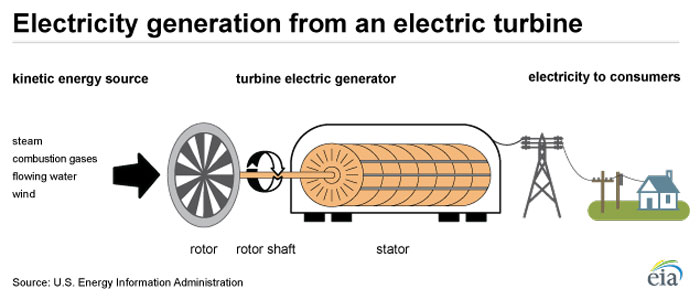
According to the Wall Street Journal, government inefficiency makes so–called green energy needlessly expensive. On the other hand, the New York Times examined solar power only five days later and inquired optimistically, “What Will We Do With Our Free Power?”
So, will the “Green New Deal” bring us limitless, almost free energy, or is it the granddaddy of all government boondoggles?
A Reliable System
Indeed, few aspects of daily life affect everyone as much as electrical generation and distribution. Yet, the “common man” thinks little about them. Energy is a topic only the experts understand. The rest of us prefer ignorance.
Why America Must Reject Isolationism and Its Dangers
One source of our reluctance is that the electrical system usually functions reliably. We awaken in the morning, flip a switch and a light comes on. Our world is full of electrical devices. When they function, we pay little attention to them. The only time we notice is when they don’t work. Then, life all but grinds to a halt until we find and correct the reason.
The only other time we notice is that day we pay our electric bill. Perhaps, dazed by the amount due, we might look at the itemized charges, but we soon retreat. The maze of figures and taxes is just too bewildering. What is a kilowatt/hour, anyway? How many slices of toast does it brown? How much does one of them cool or heat a room? It is easier to pay the figure at the bottom and resolve to conserve next month.
Making and Distributing Power
Before examining the Journal’s and the Times’s actual claims, it makes sense to lay out two undeniable truths about how we generate and use electricity.
First, let’s look at the process of “making” electricity. The essential element is a generator. Most of the time, it is a device that whirls on a shaft–a turbine.
There are many ways to spin the turbine. The simplest is to put it in a dam on a river so that the flowing water turns the generator. It is clean, efficient and reliable. Unfortunately, there are not enough rivers to satisfy the power demand. The most common process is funneling steam into the generator, heated by coal, natural gas, oil or a nuclear reaction.
Once generated, electricity enters a nationwide “grid” of power lines and storage facilities that carry it to consumers.
Accelerating Demand
The second unshakable fact is that we use more electricity than ever, and the demand will increase. In times past, people used to refer to “the light bill.” In the early twentieth century, that was accurate. Then fans, radios, electric ranges, vacuum cleaners and so on came into American homes. By the sixties, there were a multitude of electrical devices. Years before entering political life, Ronald Reagan admonished everyone to “Live Better Electrically.”
 Learn All About the Prophecies of Our Lady of Good Success About Our Times
Learn All About the Prophecies of Our Lady of Good Success About Our Times
That growth pales in comparison to the amount of energy used today. Like it or not, Artificial Intelligence (AI) is increasing rapidly. The World Economic Forum says that “the computational power required for sustaining AI’s rise is doubling roughly every 100 days.” Lay on top of that the power necessary to convert the current fleet of gasoline–and diesel–burning cars and trucks to batteries, and the long–term effect is staggering.
Replacing Reliability With Uncertainty
At the same time, the most dependable means of generating electricity, steam heated by “fossil fuels,” is steadily losing popularity. The most straightforward alternative would be shifting to nuclear power, which is even less fashionable.
So, that leaves the environmental movement’s dreams–wind and solar. However, these lack reliability. Yes, the sun is always up there, and the wind seldom stops. However, atmospheric conditions like storms radically affect both. At the same time, humans are likely to use more power when those sources are the least productive. A couple of obvious examples are heat on long winter nights and electric lights after dark.
Wind and solar power are also the least flexible. The windmills operate within a relatively narrow band for maximum output. On a still day, they do not generate at all. Too much wind destroys the equipment. Solar power depends on large and permanently mounted collectors. Additionally, both are expensive to build, and area residents often resist their construction.
Expensive “Cheap” Power
The Wall Street Journal article focused on the cost of wind power. It takes issue with the price that the State of New York will pay two companies building “wind farms” off the coast of Long Island. The Journal reports that the state will pay $146 per megawatt–hour to “Sunrise Wind” and $155 to “Empire Wind 1.” According to the Journal, these prices are “at least four times the average grid cost paid over the past year.” The state will need to find a way to pass these costs on to consumers or taxpayers.
Perhaps the risks of building and maintaining a “farm” of windmills justify that price. After all, a hurricane could blow through once the windmills are complete and destroy everything. At best, the generators will be subject to a saltwater environment. Indeed, salt, metal, water and electricity do not play well together, so high maintenance costs are unavoidable.
In this case, the costs are higher than traditional sources of energy. It is not a case of build and forget but build and maintain amid great risks.
10 Razones Por las Cuales el “Matrimonio” Homosexual es Dañino y tiene que Ser Desaprobado
Simultaneously, a New York Times opinion writer, David Wallace–Wells, paints a rosy future for solar power. He quotes Jenny Chase, a “New Energy Finance analyst” for the financial news giant Bloomberg.
A Genuine Revolution
“[I]f you’d told me nearly 20 years ago what would be the case now… I would have laughed in your face. There is genuinely a revolution happening.”
Mr. Wallace–Wells paraphrases Miss Chase’s estimation that “solar power will be absolutely and reliably free during the sunny parts of the day…‘pretty much everywhere.’”
“Of course,” Mr. Wallace–White enthuses, “because the sun can be simply counted on to rise every day, you don’t need to pay in any ongoing way for a commodity input, like oil or gas, to keep the system humming.”
We just need to spend the money to set up the system, which will continue indefinitely. There is no mention of maintenance, risks or wear.
Who Wins the Debate?
So, the question that occurs to any thinking person is, where is the truth? Will “green energy” deliver us to the Times’s level of euphoria or the Journal’s slough of despond?
I hate to say it, but my money is with the men on Wall Street.
Science Confirms: Angels Took the House of Our Lady of Nazareth to Loreto
For over two hundred years, the followers of Rousseau, Voltaire and Co. have proclaimed that humanity is perfectible. The progressives want us to think that government is the agent of that perfection. The promises are electrifying, but their achievements are as dead as solar–charged batteries on a stormy day.’
Photo Credit: © Rawpixel.com – stock.adobe.com


